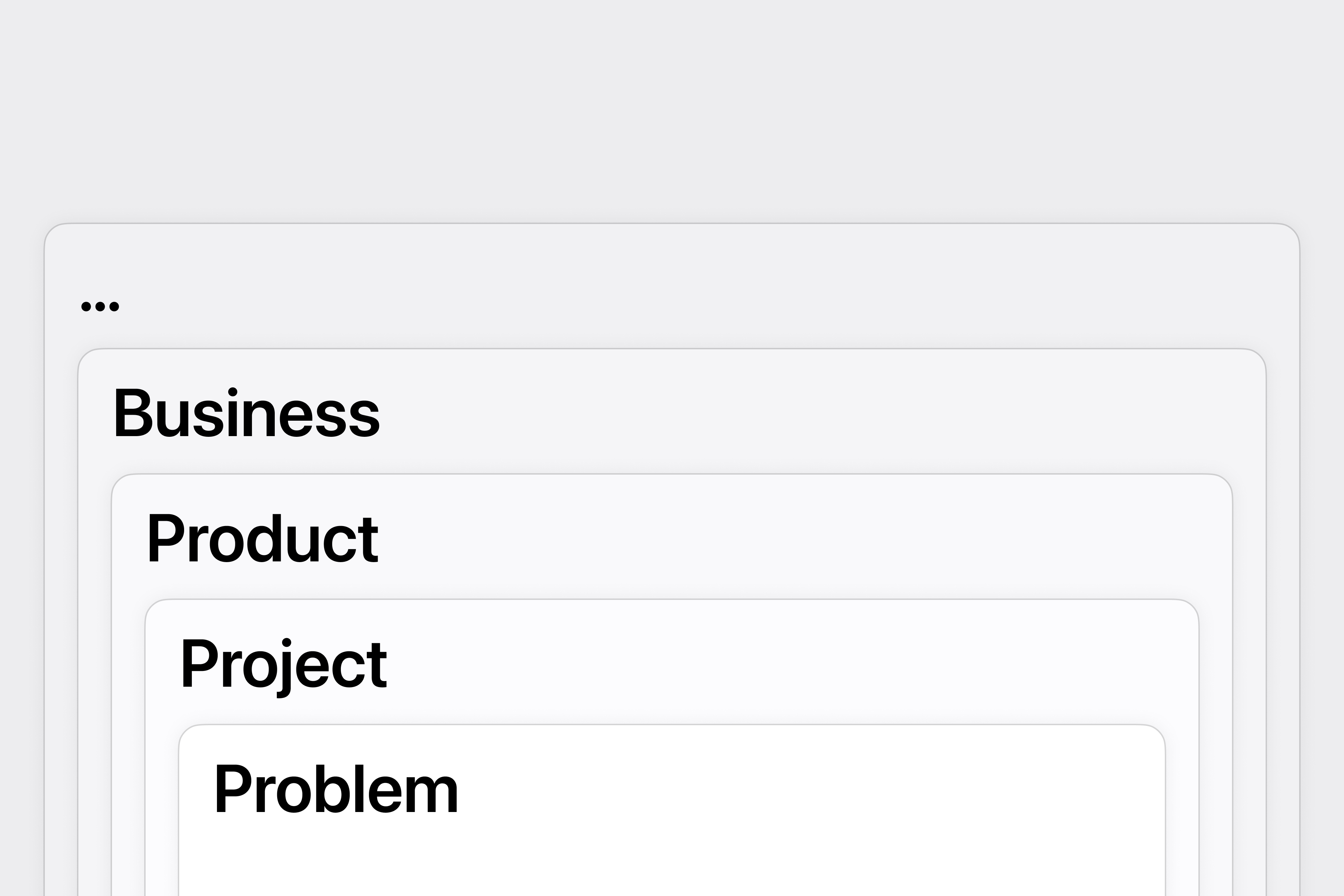Context is something that helps you make informed decisions. It brings you closer to the problem. As a result, it makes you more confident and opinionated. Designers who build their context become great partners to work with. It takes time, effort, and curiosity, but pays off in full.
I've encountered numerous examples where a lack of this knowledge leads to poor outcomes. Design shops that struggle to gain necessary context fail to create lasting solutions. In-house designers who prefer to work only on request wonder why they aren't advancing in their careers.
Personally, I also find it helpful to expand the meaning of context to include the internal perception of work.
External
External context answers the question "Why are we doing this?" Imagine peeling an onion; at its core lies the problem, surrounded by layers representing the project, product, business, and market. Your understanding of external context usually reflects your level of seniority. Here are some questions to get you started:
- Why now? (Business)
- Who is it for? (Product)
- What are dependencies? (Project)
 Context stack
Context stack
Internal
On the other hand, internal context answers the question "Why am I doing this?" It's about self-awareness and motivation. Can you recognize opportunities before you? Do you have an unfair advantage? The way you manage internal context defines your maturity.
Gaining external context enables you to focus on the right things and develop expertise, while being aware of internal context motivates you to tap into your potential.